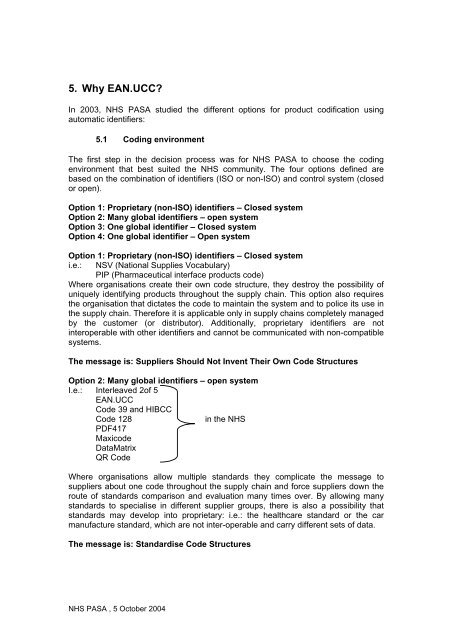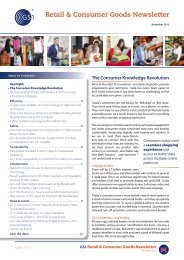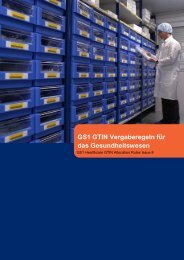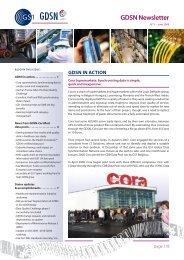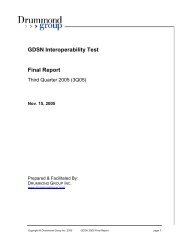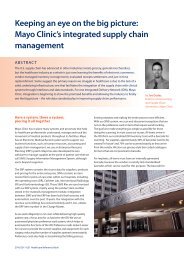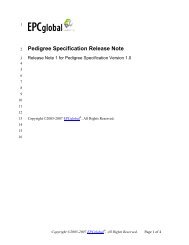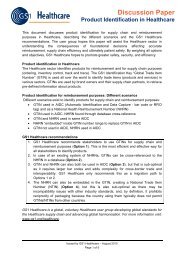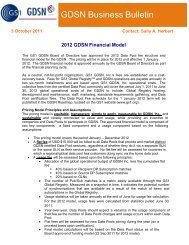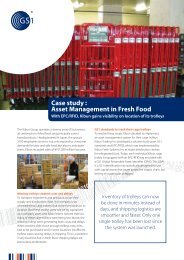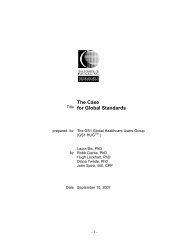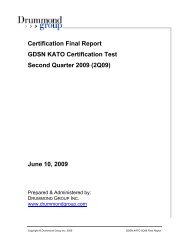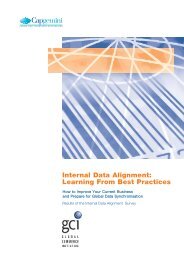Combined GS1 Healthcare and GS1 Healthcare User Group ...
Combined GS1 Healthcare and GS1 Healthcare User Group ...
Combined GS1 Healthcare and GS1 Healthcare User Group ...
You also want an ePaper? Increase the reach of your titles
YUMPU automatically turns print PDFs into web optimized ePapers that Google loves.
5. Why EAN.UCC?<br />
In 2003, NHS PASA studied the different options for product codification using<br />
automatic identifiers:<br />
5.1 Coding environment<br />
The first step in the decision process was for NHS PASA to choose the coding<br />
environment that best suited the NHS community. The four options defined are<br />
based on the combination of identifiers (ISO or non-ISO) <strong>and</strong> control system (closed<br />
or open).<br />
Option 1: Proprietary (non-ISO) identifiers – Closed system<br />
Option 2: Many global identifiers – open system<br />
Option 3: One global identifier – Closed system<br />
Option 4: One global identifier – Open system<br />
Option 1: Proprietary (non-ISO) identifiers – Closed system<br />
i.e.: NSV (National Supplies Vocabulary)<br />
PIP (Pharmaceutical interface products code)<br />
Where organisations create their own code structure, they destroy the possibility of<br />
uniquely identifying products throughout the supply chain. This option also requires<br />
the organisation that dictates the code to maintain the system <strong>and</strong> to police its use in<br />
the supply chain. Therefore it is applicable only in supply chains completely managed<br />
by the customer (or distributor). Additionally, proprietary identifiers are not<br />
interoperable with other identifiers <strong>and</strong> cannot be communicated with non-compatible<br />
systems.<br />
The message is: Suppliers Should Not Invent Their Own Code Structures<br />
Option 2: Many global identifiers – open system<br />
I.e.: Interleaved 2of 5<br />
EAN.UCC<br />
Code 39 <strong>and</strong> HIBCC<br />
Code 128<br />
in the NHS<br />
PDF417<br />
Maxicode<br />
DataMatrix<br />
QR Code<br />
Where organisations allow multiple st<strong>and</strong>ards they complicate the message to<br />
suppliers about one code throughout the supply chain <strong>and</strong> force suppliers down the<br />
route of st<strong>and</strong>ards comparison <strong>and</strong> evaluation many times over. By allowing many<br />
st<strong>and</strong>ards to specialise in different supplier groups, there is also a possibility that<br />
st<strong>and</strong>ards may develop into proprietary: i.e.: the healthcare st<strong>and</strong>ard or the car<br />
manufacture st<strong>and</strong>ard, which are not inter-operable <strong>and</strong> carry different sets of data.<br />
The message is: St<strong>and</strong>ardise Code Structures<br />
NHS PASA , 5 October 2004


